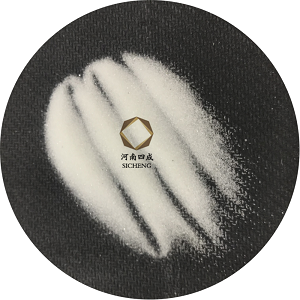Glass beads are a very popular and versatile abrasive media for shot blasting (also often called bead blasting or abrasive blasting).
| Sandblasting glass beads | Filling media and abrasives | Road making glass beads |
| 30-80mesh | 0.4-0.6mm | BSW |
| 30-50mesh (46mesh) | 0.6-0.8mm | BS 6088 A |
| 40-60mesh (60mehs) | 0.8-1mm | BS 6088B |
| 50-70mesh (80mehs) | 0.8-1.2mm | ASTM |
| 70-100mesh (60mehs) | 1-1.5mm | AASHTO TYPE1 |
| 100-140mesh (100mehs) | 1.5-2mm | AASHTO TYPE2 |
| 150-200mesh (180mehs) | 2-2.5mm | EN |
| 200-250mesh (250mehs) | 2.5-3mm | EN1424 |
| 250-280mesh (280mehs) | 3-4mm | EN1423 |
| 28-320mesh (325mesh) | 4-5mm | |
| 400mesh | 5-6mm |
What are Glass Bead Abrasives?
Glass beads are spherical beads manufactured from lead-free soda-lime glass. They are hard, chemically inert, and designed to be used in air-blast equipment or blast cabinets.
Key Characteristics & Advantages
Smooth, Peened Finish: Unlike angular abrasives that cut into the surface, glass beads “peen” it. This means they impact the surface and compress it, creating a smooth, satin, or matte finish without changing the part’s dimensions.
Non-Contaminating & Chemically Inert: They do not embed in the substrate or cause rust. This makes them ideal for stainless steel, aluminum, and other non-ferrous metals where contamination (like from steel shot) is a concern.
Cleaning & Decorative Finishing: Perfect for removing light rust, mill scale, paint, and carbon deposits while imparting a uniform, aesthetically pleasing finish.
Stress Relieving and Compressive Stress: The peening action induces a layer of compressive stress on the surface, which can help to improve fatigue life and reduce the likelihood of stress corrosion cracking.
Reusable: Glass beads are durable and can be recycled many times within a closed-loop blasting system, making them cost-effective over time.
Common Applications
Glass beads are used across a wide range of industries for both cleaning and finishing:
Automotive: Cleaning cylinder heads, engine blocks, and other components; deburring and finishing.
Aerospace: Peening turbine blades, cleaning flight-critical components without damaging tolerances.
Marine: Removing corrosion and salt deposits from aluminum hulls and fittings.
Metalworking: General deburring, descaling, and creating a uniform matte finish on welds.
Mold & Die Cleaning: Gently cleaning plastic injection molds and die-cast dies without damaging the precise surface.
Restoration: Cleaning and restoring antique tools, parts, and architectural metalwork without aggressive material removal.
Jewelry & Art: Creating a satin finish on precious metals.
How to Choose the Right Glass Bead Size
The size of the glass bead is critical and is measured in microns (µm) or by “mesh size.” The choice depends on your desired finish and the contaminant you’re removing.
| Common Size | Typical Use Case |
|---|---|
| 50 – 70 µm (270-200 Mesh) | Very fine finish, light cleaning, cosmetic peening, delicate parts. |
| 100 – 150 µm (140-100 Mesh) | The most popular general-purpose size. Good for cleaning, light deburring, and a uniform satin finish. |
| 200 – 300 µm (70-50 Mesh) | More aggressive cleaning, removing tougher paints, heavier rust, and scale. |
| 500 µm and larger (30 Mesh and lower) | Heavy-duty cleaning and peening on large, robust components. |


